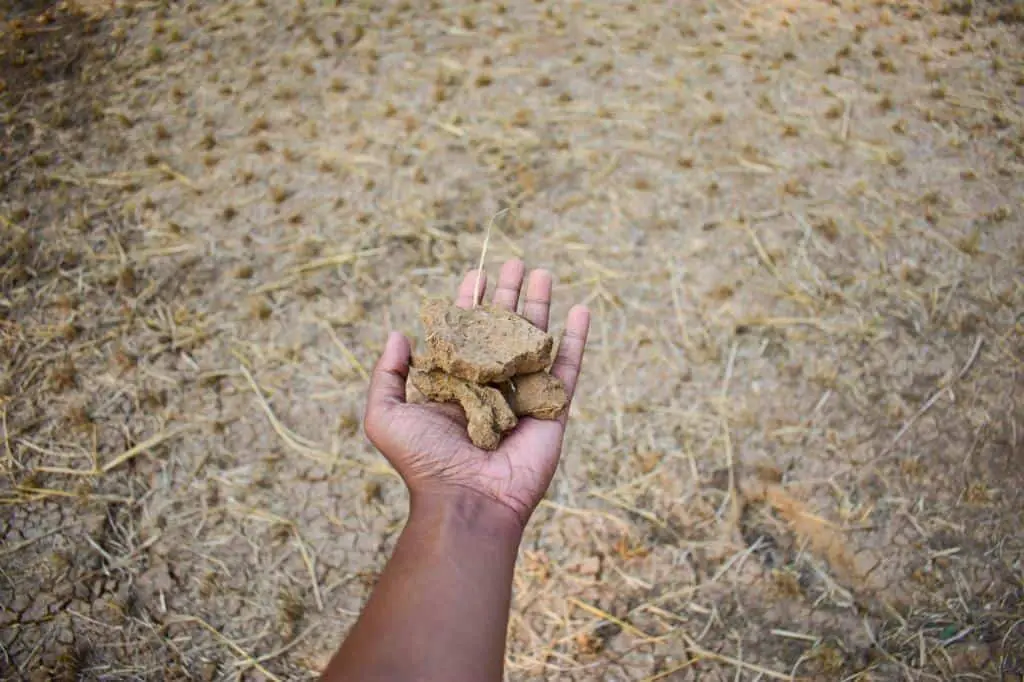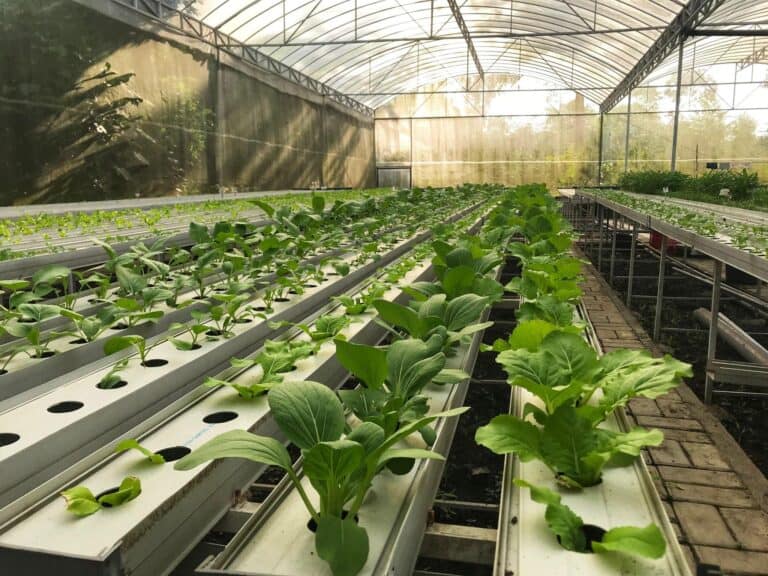What Makes the Soil Fertile? Which Factors Improve Soil Fertility?

When it comes to successful gardening or farming, one crucial factor that can make or break your efforts is soil fertility. Soil fertility is the lifeblood of successful gardening and farming. Fertile soil provides a rich foundation for plants to grow and thrive. This ensures bountiful harvests and healthy vegetation.
Achieving and maintaining soil fertility requires an understanding of the various factors that influence its composition and nutrient content. So what exactly makes soil fertile? What are the factors that influence its productivity?
In this article, we will explore these factors and learn how to improve soil fertility effectively.
Whether you’re a novice gardener or a seasoned farmer, understanding these factors will help you maximize soil potential and grow lush landscapes. So, let’s dig deep into the world of soil fertility and discover the secrets that lie beneath our feet.
Soil Composition and Fertility: An Overview
The composition of soil plays a significant role in determining its fertility. One vital component is organic matter, which consists of decaying plant and animal materials. Organic matter enhances soil fertility by improving its structure, increasing water retention, and promoting the growth of beneficial microorganisms. It also serves as a nutrient reservoir, releasing essential elements for plant uptake.
Another critical aspect is soil pH, which measures the acidity or alkalinity of the soil. Different plants have specific pH preferences, and soil pH directly affects nutrient availability. For example, acidic soil limits the availability of certain nutrients, while alkaline soil can cause nutrient imbalances. Understanding and adjusting soil pH to suit the needs of your plants is crucial for maximizing fertility.
Soil texture is another factor to consider. It refers to the relative proportions of sand, silt, and clay particles in the soil. Each soil texture has unique properties that affect fertility. Sandy soils, for instance, drain quickly and often lack essential nutrients. On the other hand, clay soils have excellent water and nutrient retention abilities but may suffer from poor drainage. Loam soils, which contain a balanced mix of sand, silt, and clay, tend to be the most fertile.
What Makes the Soil Fertile?
At the heart of fertile soil lies a delicate balance of organic matter, nutrients, and microorganisms that work in harmony to nourish and sustain plant life. Organic matter, often derived from decaying plants and animals, serves as the lifeblood of the soil.
It enriches the soil with essential nutrients, improves its structure, and enhances its ability to retain moisture. As the organic matter decomposes, it releases vital nutrients like nitrogen, phosphorus, and potassium, which are the building blocks of plant growth.
But it is not just the presence of organic matter that defines fertile soil; it is also the diverse community of microorganisms that call it home. Beneath the surface, an intricate web of bacteria, fungi, protozoa, and other microscopic creatures tirelessly work to break down organic matter, cycling nutrients and creating a hospitable environment for plants.
These tiny organisms form symbiotic relationships with plant roots, forming intricate networks known as mycorrhizae, which facilitate the exchange of nutrients and water. They also protect plants from diseases and pests, acting as nature’s guardians of the soil.
The texture and structure of soil also play a pivotal role in its fertility. A fertile soil possesses a balanced composition of sand, silt, and clay particles, creating a crumbly texture that allows for adequate drainage and aeration. This enables plant roots to penetrate the soil easily, accessing nutrients and water. Furthermore, a well-structured soil prevents erosion, safeguarding the delicate balance of the ecosystem.
Another critical factor in soil fertility lies in its pH level. The pH scale measures the acidity or alkalinity of the soil, with neutral soil having a pH of 7. Different plants thrive in different pH ranges, and a fertile soil maintains an optimal pH level to support the desired plant species. Soil pH influences nutrient availability and microbial activity, and managing it appropriately is crucial for healthy plant growth.
Nutrient Management for Soil Fertility
Proper nutrient management is essential for maintaining soil fertility. Understanding the difference between macronutrients and micronutrients is crucial for healthy plant growth.
Macronutrients are needed in large quantities and include elements like nitrogen (N), phosphorus (P), and potassium (K). These nutrients play crucial roles in various plant functions, such as photosynthesis, root development, and disease resistance.
Micronutrients are required in smaller amounts but are equally important. Examples include iron (Fe), manganese (Mn), and zinc (Zn), which are involved in enzyme activities and other vital plant processes.
Regular soil testing is crucial for determining the nutrient levels in your soil. By analyzing the soil, you can identify deficiencies or excesses and make informed decisions about nutrient supplementation. Various testing methods are available, including DIY kits and professional laboratory analyses. Testing helps you optimize nutrient management by providing accurate information about your soil’s specific needs.
Organic Methods to Improve Soil Fertility

Organic methods offer sustainable solutions to enhance soil fertility while minimizing environmental impact. Here are a few effective techniques you can employ:
- Composting: Composting is the process of decomposing organic waste materials into nutrient-rich compost. By composting kitchen scraps, yard waste, and other organic matter, you can create a valuable soil amendment. Adding compost to your soil improves its structure, moisture-holding capacity, and nutrient content.
- Cover crops: Planting cover crops during fallow periods or as green manure is an excellent way to enrich the soil. Cover crops, such as legumes or grasses, help prevent erosion, suppress weeds, and fix atmospheric nitrogen, enriching the soil with this essential nutrient. When these cover crops are tilled or mulched into the soil, they contribute organic matter, releasing nutrients and improving fertility.
- Incorporating organic amendments: Organic amendments, such as well-rotted manure or composted leaves, can be directly incorporated into the soil. These amendments enhance soil fertility by increasing organic matter content, improving soil structure, and providing a slow release of nutrients. They also stimulate microbial activity, which further contributes to nutrient availability for plants.
Chemical Methods to Improve Soil Fertility
In addition to organic methods, chemical approaches can also be employed to improve soil fertility. Here are a few strategies to consider:
- Fertilizer application techniques: Fertilizers are concentrated sources of essential nutrients that can be applied directly to the soil. They provide a quick and targeted boost of nutrients to plants, ensuring optimal growth and productivity. Fertilizers can be applied through various methods, such as broadcasting, side-dressing, or foliar spraying, depending on the specific needs of your plants.
- Understanding the NPK ratio in fertilizers: Fertilizers are labeled with three numbers that represent the ratio of nitrogen (N), phosphorus (P), and potassium (K) they contain. This ratio is known as the NPK ratio. Different plants have varying nutrient requirements. So it’s important to choose fertilizers with the appropriate NPK ratio for your specific crops. For example, nitrogen promotes leaf growth, phosphorus supports root development and flowering, and potassium enhances overall plant health and disease resistance.
- Soil testing and nutrient recommendations: Regular soil testing is crucial when using chemical fertilizers. It allows you to assess nutrient levels and make informed decisions about fertilizer application. Soil testing helps determine the specific nutrient deficiencies or excesses in your soil, enabling you to tailor your fertilizer application accordingly. Additionally, consulting with local agricultural extension services or professionals can provide valuable insights and recommendations for nutrient management.
Crop Rotation and Soil Fertility
Crop rotation is a valuable technique for maintaining and improving soil fertility. By rotating crops, farmers can effectively utilize nutrients in the soil and reduce the risk of nutrient depletion. Here are some benefits of crop rotation:
- Nutrient balance: Different crops have varying nutrient requirements. By rotating crops, you can balance nutrient uptake and prevent the excessive depletion of specific nutrients.
- Pest and disease control: Crop rotation disrupts pest and disease cycles, reducing the risk of buildup and allowing natural pest control mechanisms to thrive.
- Weed management: Rotating crops can help suppress weed growth, as different crops have different weed susceptibility. This reduces the reliance on herbicides.
To plan an optimal crop rotation system, consider the nutrient needs of different crops and their compatibility with each other. For example, legumes like beans and peas fix nitrogen in the soil, benefiting subsequent crops that have high nitrogen requirements. Integrate cover crops like clover or rye into your rotation to improve soil structure and nutrient cycling.
Here are some effective crop rotation systems:
| Rotation System | Crops |
| Three-year rotation | Year 1: Corn |
| Year 2: Soybeans | |
| Year 3: Wheat or cover crop | |
| Four-year rotation | Year 1: Corn |
| Year 2: Soybeans | |
| Year 3: Oats or barley | |
| Year 4: Alfalfa or clover (legume) | |
| Seven-year rotation | Year 1: Corn or potatoes |
| Year 2: Soybeans | |
| Year 3: Small grains (rye, barley, or wheat) | |
| Year 4: Legumes (clover or alfalfa) | |
| Year 5: Cool-season vegetables (carrots, cabbage) | |
| Year 6: Warm-season vegetables (tomatoes, peppers) | |
| Year 7: Cover crop |
Soil Erosion and its Impact on Fertility
Soil erosion poses a significant threat to soil fertility. It occurs due to natural processes or human activities like improper land management and deforestation. Understanding the causes of soil erosion is crucial to addressing and mitigating its impact. Here are some key points:
- Water erosion: Rainfall, especially heavy downpours, can cause water erosion by washing away the topsoil. Slope steepness, soil texture, and vegetation cover affect the severity of water erosion.
- Wind erosion: Dry and loose soil particles can be easily picked up and carried away by wind, causing wind erosion. Factors like wind speed, soil moisture, and vegetation cover influence wind erosion.
To prevent soil erosion and protect soil fertility, consider implementing the following techniques:
- Contour plowing: Plowing along the contour lines of slopes helps to slow down water flow and prevent soil erosion.
- Terracing: Constructing terraces on sloping lands creates level surfaces that reduce water runoff and soil erosion.
- Cover crops: Planting cover crops like legumes or grasses helps to protect the soil from erosion by reducing the impact of raindrops and wind.
To replenish nutrients lost due to erosion, consider applying organic amendments such as compost or well-decomposed manure. These amendments not only enrich the soil with essential nutrients but also improve its structure and water-holding capacity.
Water Management and Soil Fertility
Water plays a crucial role in nutrient availability and overall soil fertility. Efficient water management practices are essential for maximizing nutrient uptake by plants and maintaining soil fertility. Consider the following points:
- Water and nutrient transport: Water serves as a carrier for nutrients, facilitating their movement from the soil to plant roots. Adequate water availability ensures the efficient uptake of essential nutrients by plants.
- Irrigation practices: Implementing efficient irrigation techniques can help conserve water and enhance soil fertility. Consider methods such as drip irrigation or using irrigation scheduling tools to optimize water application based on crop needs.
- Avoiding waterlogging: Excessive water accumulation in the soil can lead to waterlogging, which deprives plant roots of oxygen and hampers nutrient uptake. Proper drainage systems and avoiding overwatering are essential to prevent waterlogging.
- Mulching: Applying mulch, such as straw or wood chips, to the soil surface helps conserve moisture, regulate soil temperature, and reduce evaporation. Mulching also improves soil structure over time as it decomposes.
By managing water effectively, you can maintain optimal soil moisture levels, promote nutrient availability, and support healthy plant growth, ultimately enhancing soil fertility.
Managing Soil Compaction for Fertility
Soil compaction can significantly impact soil fertility and crop productivity. It occurs when soil particles are compressed, reducing pore space and limiting air and water movement within the soil. Consider the following factors and techniques for managing soil compaction:
- Causes and consequences: Soil compaction can result from heavy machinery use, excessive foot traffic, or improper tillage practices. It reduces root penetration, limits nutrient availability, and impedes water infiltration and drainage.
- Improving soil structure: Techniques such as deep tillage, subsoiling, or aeration can help alleviate soil compaction by loosening the soil and improving its structure. This allows for better root growth and nutrient uptake.
- Reducing traffic: Minimize machinery and foot traffic on agricultural fields, especially when the soil is wet, to prevent compaction. Consider controlled traffic farming systems that confine equipment to specific lanes.
- Cover cropping: Integrating cover crops into your farming practices can contribute to soil compaction management. Their deep root systems help break up compacted layers, improving soil structure and promoting nutrient cycling.
Managing soil compaction is vital for maintaining soil fertility and optimizing crop performance. By implementing appropriate techniques and reducing compaction risks, you can enhance nutrient availability and overall soil health.
Sustainable Practices for Long-Term Soil Fertility
Adopting sustainable practices is crucial for preserving soil fertility in the long run. Consider the following strategies:
- Conservation agriculture: Conservation agriculture principles, such as minimal soil disturbance, permanent soil cover, and diversified crop rotations, promote soil health and fertility. These practices reduce erosion, enhance soil organic matter, and improve water infiltration.
- Enhancing soil biodiversity: Encouraging soil biodiversity through practices like intercropping, agroforestry, and the use of organic amendments supports beneficial organisms like earthworms and microorganisms. They contribute to nutrient cycling and soil structure improvement.
- Integrated pest management (IPM): Implementing IPM strategies minimizes the use of synthetic pesticides, which can negatively impact soil health. IPM focuses on ecological approaches such as biological control, cultural practices, and monitoring to manage pests effectively.
By incorporating these sustainable practices into your farming methods, you can maintain soil fertility, minimize environmental impacts, and foster a healthy and productive agricultural ecosystem.
Which Factors Improve Soil Fertility the Most?
Among the factors that stand as pillars of soil fertility, the presence of organic matter reigns supreme. Imagine, if you will, the scene of fallen leaves carpeting the forest floor, their vibrant hues contrasting against the earthy browns. As these leaves decay, they provide sustenance to the soil, enriching it with essential nutrients. It is this generous offering of organic matter, derived from the remains of plants and animals, that feeds the hungry soil, nurturing its potential.
Through the miraculous process of decomposition, organic matter releases a steady supply of nitrogen, phosphorus, and potassium, which serve as the lifeblood of plant growth.
What Makes the Soil Fertile (Conclusion)
Maintaining soil fertility requires a comprehensive understanding of various factors and their interplay. Crop rotation, soil erosion prevention, water management, compaction mitigation, and sustainable practices all contribute to creating and preserving fertile soil.
By implementing these strategies, farmers can optimize nutrient availability, enhance crop productivity, and ensure the long-term health of their agricultural systems. Embracing these practices not only benefits individual farmers but also contributes to sustainable and environmentally-friendly agriculture on a larger scale.
As a responsible farmer, investing in the fertility of your soil is investing in the future of your farm. By understanding and implementing these factors affecting soil fertility, you can optimize crop yields, promote sustainable agricultural practices, and contribute to a healthier and more productive farming ecosystem.
By implementing these practices and understanding the factors that affect soil fertility, farmers and gardeners can create healthy and productive soils that support thriving plant growth, sustainable agriculture, and environmental stewardship.
Remember, soil fertility is not a static condition but an ongoing process that requires continuous care, monitoring, and adaptation. With proper knowledge and practices, we can maintain and improve soil fertility for a greener and more bountiful future.
FAQs on Which Factors Improve Soil Fertility?
What are the main factors that affect soil fertility?
Numerous factors, such as nutrient levels, organic matter content, soil pH, and water availability, affect soil fertility.
What are the consequences of using synthetic fertilizers on soil fertility?
While synthetic fertilizers can enhance immediate nutrient availability, overreliance on them without proper nutrient management can lead to imbalances, soil degradation, and reduced soil fertility in the long run.
How often should soil testing be done to monitor fertility levels?
Regular soil testing is recommended, ideally every 2-3 years, to assess nutrient levels, pH, and identify any nutrient deficiencies or imbalances that may require corrective actions.
Are there any specific techniques for improving soil fertility in sandy soils?
In sandy soils, organic matter plays a crucial role in improving fertility. Adding compost, mulching, and incorporating cover crops can help enhance water-holding capacity and nutrient retention in sandy soils.
Can excessive irrigation lead to soil fertility problems?
Yes, excessive irrigation can lead to nutrient leaching, where essential nutrients are washed away from the root zone. It is important to balance irrigation practices to avoid waterlogging and nutrient loss.
What are the benefits of using cover crops for soil fertility?
Cover crops provide several benefits, such as reducing soil erosion, enhancing organic matter content, improving soil structure, suppressing weeds, and adding nitrogen through nitrogen fixation.
How does climate change impact soil fertility?
Climate change can have significant effects on soil fertility. Increased temperatures, changes in precipitation patterns, and extreme weather events can alter soil moisture levels, nutrient cycling, and microbial activity, affecting soil fertility and crop productivity.







